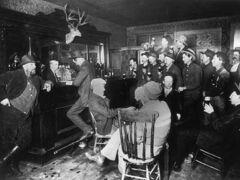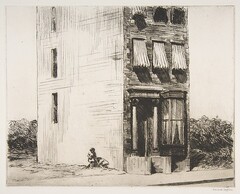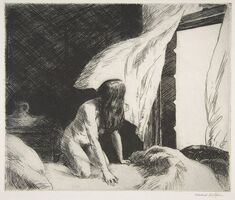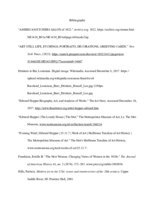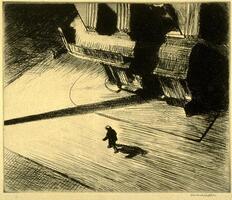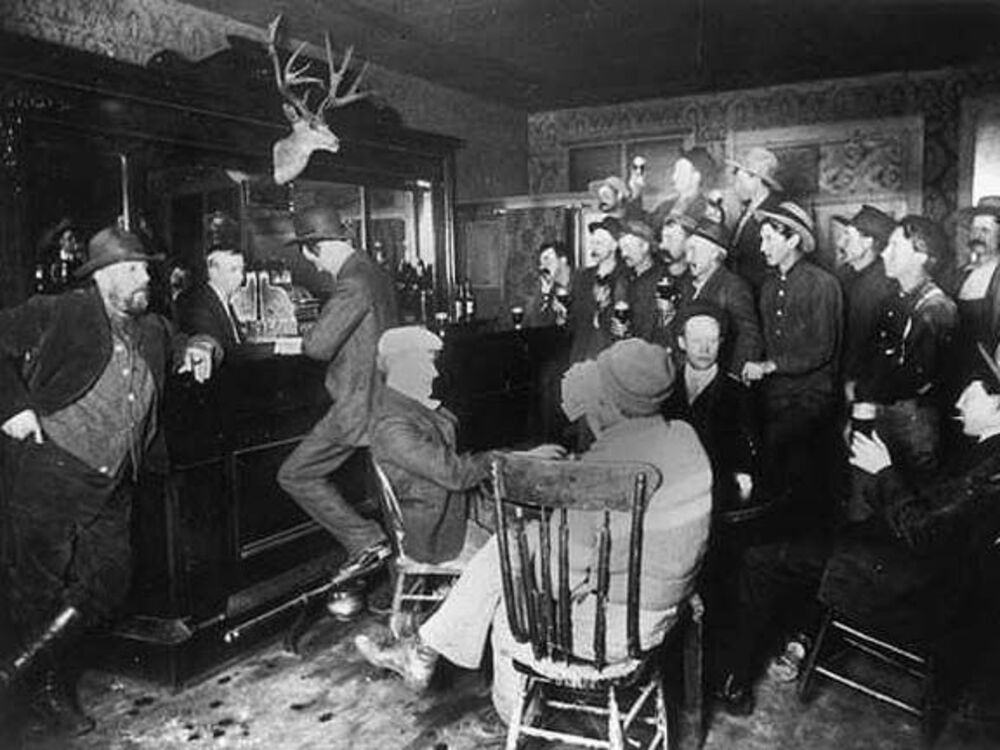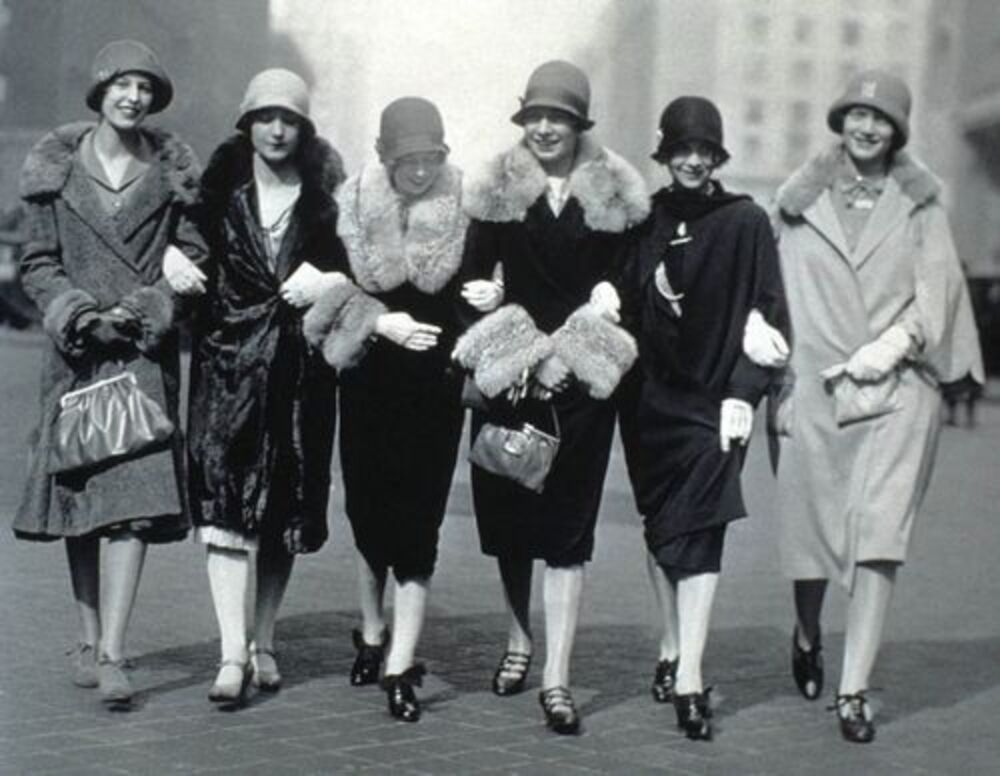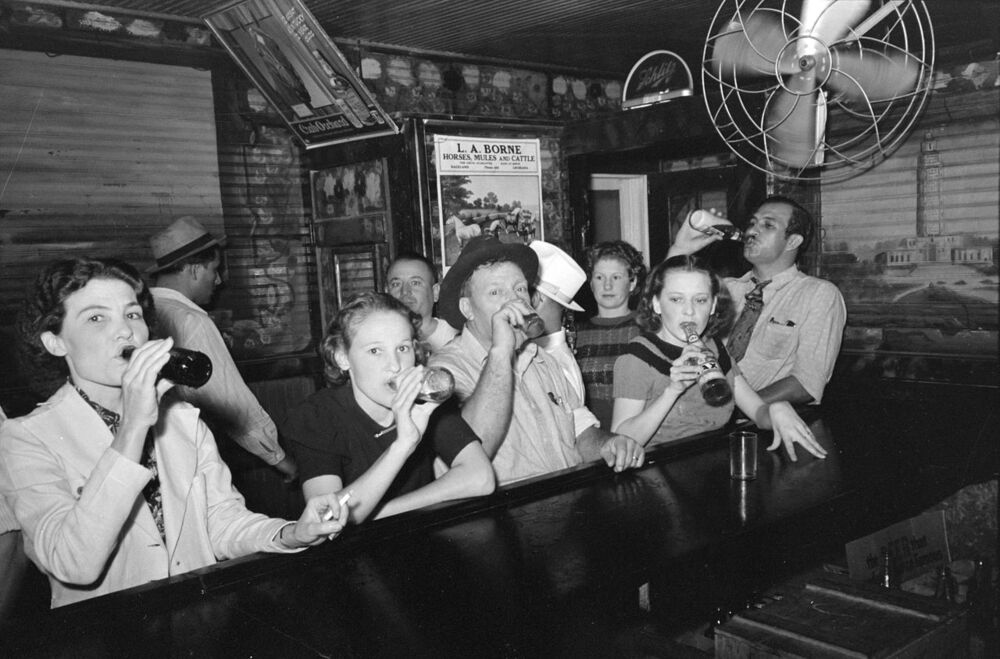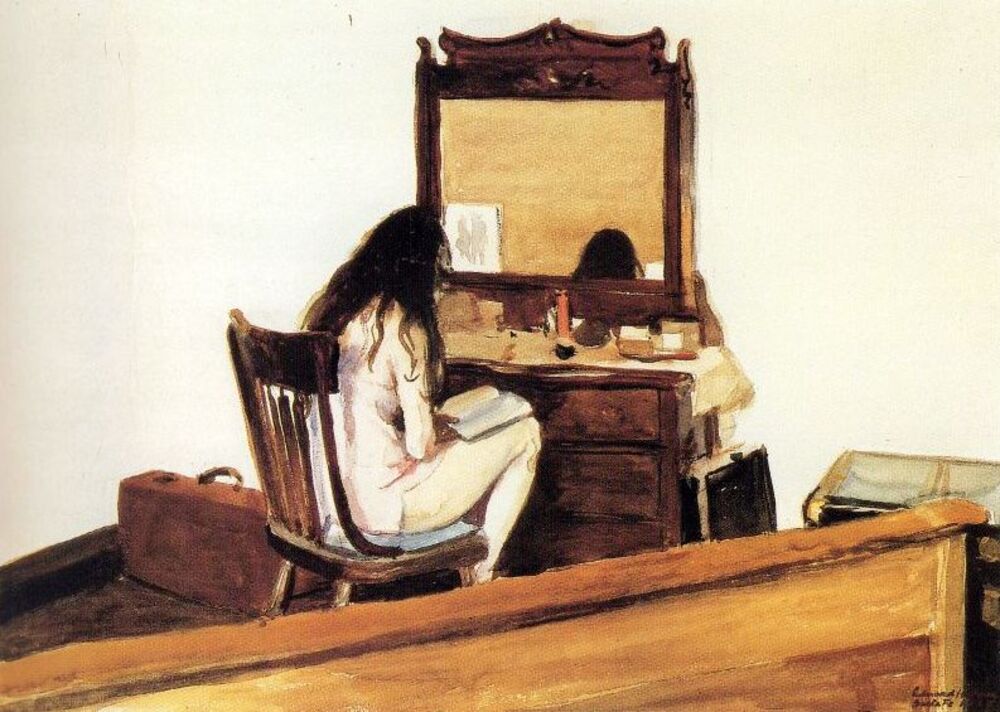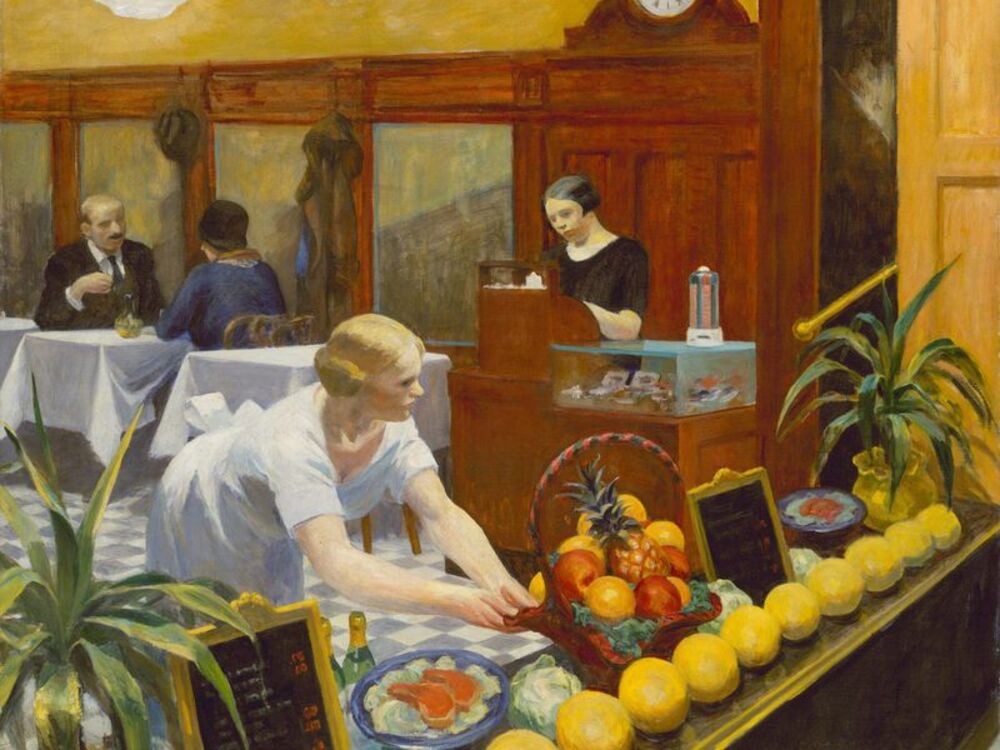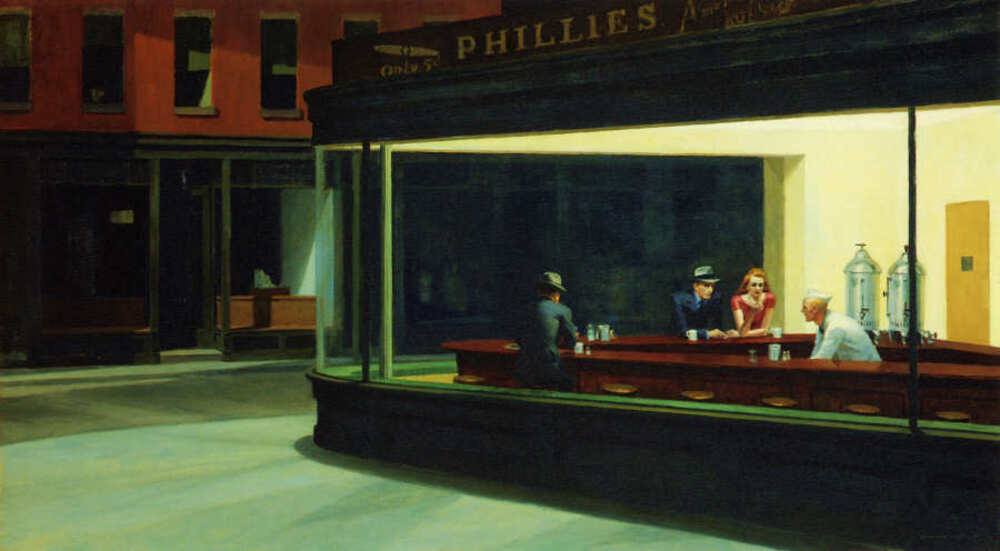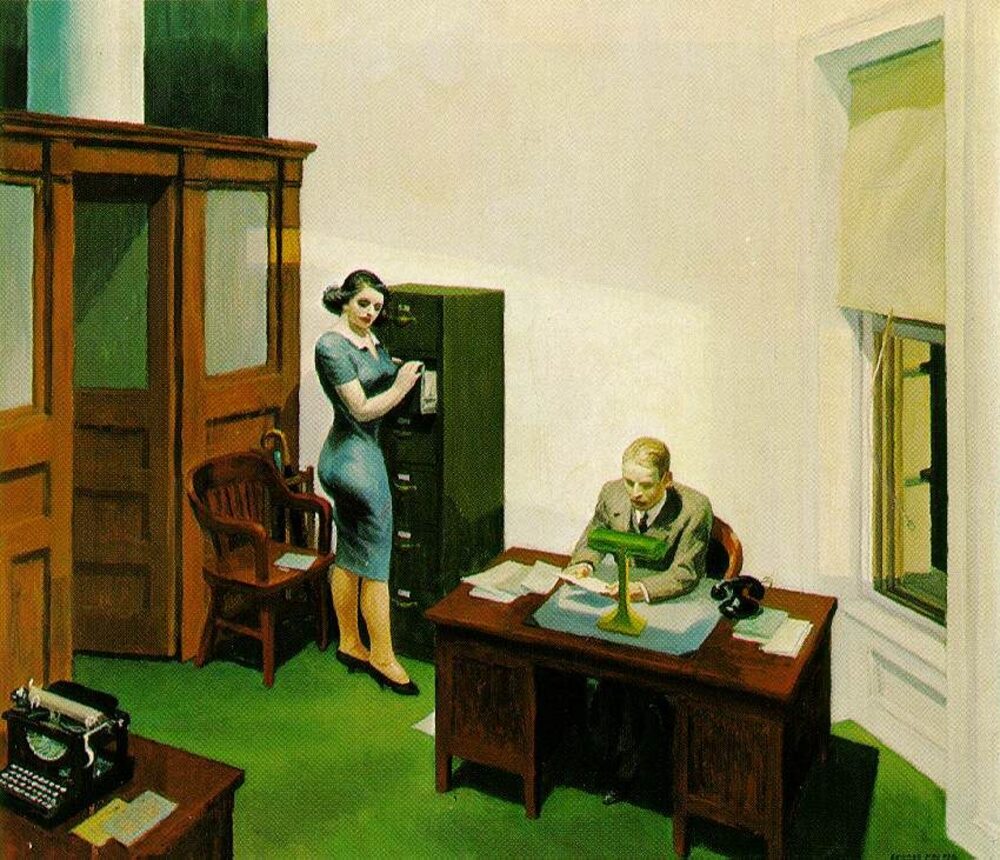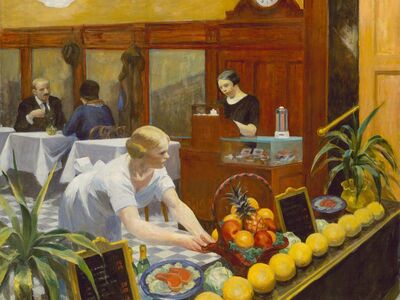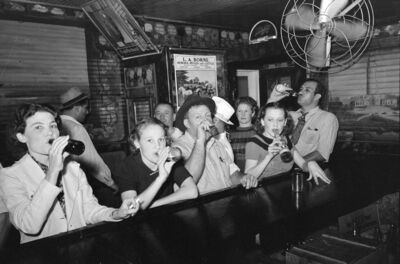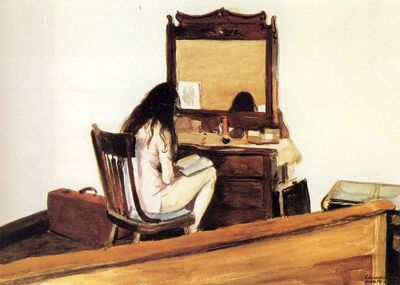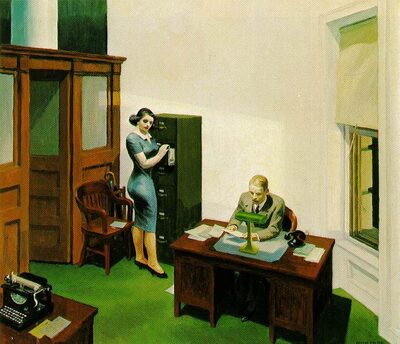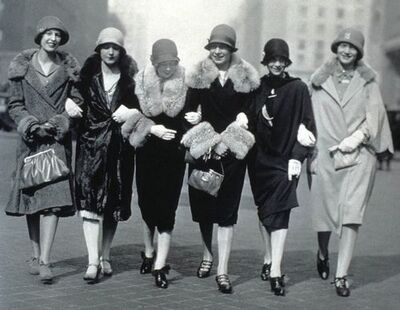Hopper and the 1920s
Edward Hopper’s East
Side Interior, was created in 1922, New York City. The 1920s in America
were popularly known as “the roaring twenties”, an era of extreme change in the
art and political world. The 1920s brought on two major events in American
history, the prohibition and the change in the 19th amendment that
allowed women to vote, creating a new age for women. The prohibition outlawed
the sale of any form of alcohol, but did not outlaw the consumption of alcohol.
People were illegally importing alcohol and consuming it in more intimate
settings, like homes or hotel rooms. The prohibition killed the “saloon scene”,
which is essentially just a different term for bar, as it did not reemerge once
it ended. Many of Hopper’s pieces were set in a saloon or bar type scene, like Nighthawks,
which he had not painted until 1942, or Tables for Ladies, which was
painted in 1930. Hopper’s Nighthawks is a very similar setting to these
photos pre-prohibition, however has a very different mood. In his painting, no
one is socializing, let alone looking at each other. The man sitting alone
appears to be looking down, the worker behind the bar is staring into the
distance, and the man and woman seated together are almost touching hands but seem
to be unbothered by each other’s presence. The lack of social interaction and
the minimal light radiating from the diner mixed with the dull colors give this
painting a moody and glum feeling. Comparing this to the photos from before the
prohibition is a very large contrast. One image is slightly more candid than
the other, people are interacting, drinking, and huddled around the bar. In the
other, everyone is looking at the camera, but you are still able to sense the
interaction between everyone. Looking at body language alone it looks like the
people in Hopper’s painting are miles apart compared to the photos inside of
the saloons. Nighthawks was painted nearly a decade after the
prohibition ended, the “saloon scene” never fully healed after the prohibition. The 1920’s was
also an age for “the New woman”, women made advances as writers and in
politics. People were beginning to understand the importance of women in real
world circumstances. As we got into the decade, women became associated with
the image of “the flapper”. Flappers were complete sexual objects by choice.
They were smokers, drinkers, wore skimpy dresses and shorter hair and began to
experiment with makeup. Women were able to find sexual freedom with this new
found image, which was completely different to the image of the woman in the
decade before and after. Hopper focused on women and human interaction a lot in
his art work. He has several prints featuring women reading, or working, like Interior
(Model Reading) (1925), or Office at Night (1946) rather than
strictly painting the female nude, which is the typical subject for women in
art. Hopper had a good grasp on women’s fashion on the trends of the era, while
never really focusing on the “flapper” image. In his painting “Office at Night,
there are clear parallels with how the woman is dressed and to the popular
trends at the time. Without depicting the flapper, you can still see how women
are dressing more promiscuous than the decades before. Her dress is short
sleeved, form-fitted and hits right below the knees. The neckline is a deep v
with a wide collar, exposing her chest. Prior to the 20s women’s fashion was
very modest featuring floor length skirts and long sleeved blouses. This decade
provided a catalyst for women’s independence.
The 1920s was also filled with racial tension. With the influx of
immigration to the states, immigration laws and restrictions were beginning to
be enforced. Along with anti-immigration we saw anti-communism in the US and
various states joining the Ku Klux Klan. And while race relations and
immigration laws were a huge part of the 1920s, Edward Hopper never seemed to
focus on it as a subject for his artwork.
Created For
K-12 EducatorK-12 Student
Museum Visitor
UMMA Docent
UMMA Staff
University Faculty
University Student
Rate this Resource
AVG: 0 | Ratings: 0
& Author Notes
All Rights ReservedLast Updated
December 11, 2017 1:30 p.m.Report
Reporting Policy

